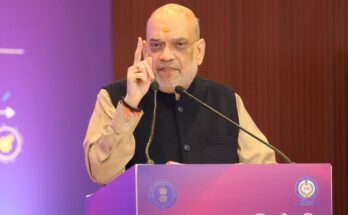New Delhi: Any potential escalation between India and China could increase operational and supply-chain risks in the current economic backdrop, even as economies look to recover from the pandemic, brokerages have said citing the recent border tension between the two countries.
The most affected sectors could be Auto, Consumer Durables, Pharmaceuticals, Telecom, Chemicals and Renewable Power sector (Solar) that seem to be the most dependent in terms of sourcing from China.
According to an India strategy report by Motilal Oswal Institutional Equities, it would be difficult and expensive for Indian firms in certain sectors to immediately find alternative suppliers at the same scale or costs.
This could create big problems for such companies who would not only have to look quickly at alternate source of supplies but also be ready to add up costs at a time when the Covid-19 has severely 444dented overall economic conditions and squeezed demand in several sectors.
While Consumer Durables are dependent on China for components, Pharma is dependent for API sourcing. Telecom is dependent on China from a network standpoint as well as for 4G smartphone handsets as China caters to more than 75 per cent of the Indian handset demand. Various sectors have material inter-linkages with China and form a critical part of the supply-chain for many firms in India, the report said.
“In the short-to-medium term, we believe the deep inter-linkages of several sectors preclude any meaningful retaliation on the trade front. However, as the world looks to de-risk its supply-chain from China given the back drop of the COVID-19 pandemic, from a long-term perspective, the need for emphasis on Indian Manufacturing gets reinforced now, the brokerage report has said.
In this regard, the government’s drive for self-dependence in various aspects (Atmanirbhar Bharat) should bring the necessary change that could sustain the changes in market dynamics.
“For sustained change, however, we believe structural reforms encouraging manufacturing (ease of doing business, ease of compliance burden, etc) and market reforms (land, labour and capital) would augur well to augment India’s manufacturing competitiveness,” the report said.
India’s growing linkage with China can be seen from the developments on the trade front. From barely any deficit in FY2000, India ran a trade deficit of $48.6 billion (1.7 per cent of GDP) with China in FY20. India’s imports from China have risen steeply from just 2.6 per cent of total imports in FY2000 to an all-time high of 16.4 per cent in FY18 before easing to 14 per cent ($65.3b) in FY20.
India’s exports to China, as a per cent of total exports, have just started picking up pace after touching 3.4 per cent in FY16. In FY20, it stood at $16.6b or 5.3 per cent of total exports from India. Finally, as per official data from the DPIIT, China’s FDI inflow over FY2000-20 to India stood at a mere $2.4b out of India’s total FDI inflow of $470.1b.
In Auto, 27 per cent of total import content is from China with the country being a key supplier of sub-components used in engine, electrical/electronics, alloy wheels, tyres, etc. Similarly, in pharmaceuticals dependency on China for key starting materials is 60-70 per cent. A ban on imports from China could lead to supply-chain disruption in the Indian Pharma industry.
In e-commerce, Chinese companies have high investment exposure to some key start-ups in India. With the pre-screening of Chinese investments in India, some Indian tech start-ups could face a supply crunch in funds from new and existing investors.




